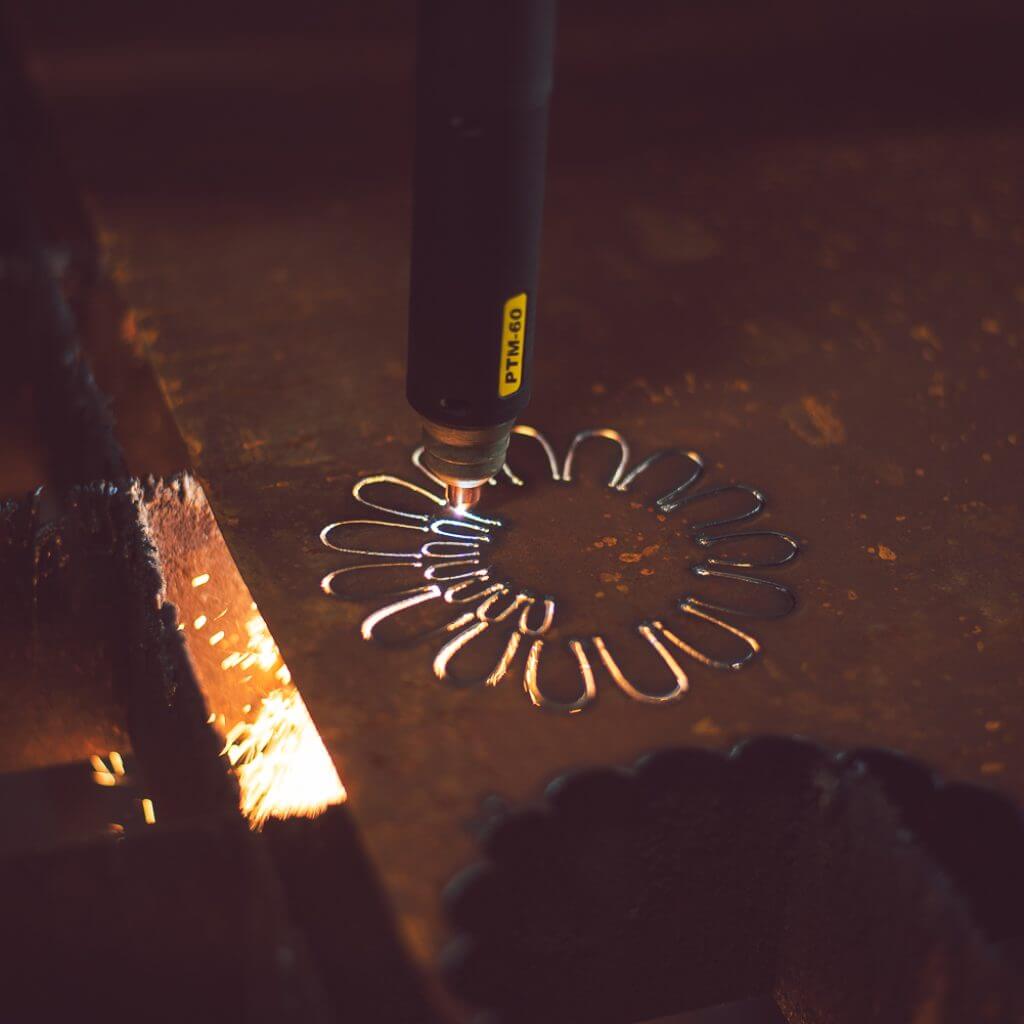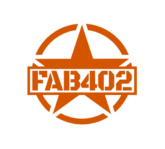A Guide to CNC Plasma Cutting
Custom metal fabrication has come a long way from traditional hand-cutting methods to the modern precision and speed of CNC plasma cutting. If you’ve ever wondered how complex metal designs, intricate shapes, or large-volume cuts are achieved with razor-sharp accuracy, CNC plasma cutting is the answer. This innovative technology is a game-changer for metal fabrication, offering unmatched precision, versatility, and efficiency.
At FAB402, we use CNC plasma cutting on a variety of projects. In this article, we’ll go over the basics of CNC plasma cutting: what it is, how it works, projects its best suited for, and how it benefits businesses and consumers alike.
For more information or to discuss your next custom metal fabrication project, stop by the shop, give us a call, or request a quote online!
What is CNC Plasma Cutting?
CNC (Computer Numerical Control) plasma cutting is a process used to cut electrically conductive metals using a jet of hot plasma. The “CNC” aspect means the cutting path is pre-programmed into a computer, which controls the machine’s movement with pinpoint precision.
The “plasma” in CNC plasma cutting refers to a state of matter created when an inert gas (like oxygen, nitrogen, or argon) is subjected to high voltage electricity. This superheated gas reaches temperatures up to 30,000°F and becomes electrically conductive. The plasma jet blasts through metal like a hot knife through butter, leaving behind clean, smooth edges.
Key Components of a CNC Plasma Cutter:
CNC Controller: The “brain” of the machine that follows a digital design file to guide the cutting torch.
Plasma Torch: Where the plasma jet is created and focused to cut the metal.
Cutting Table: The work surface where metal sheets or parts are placed.
Gas Supply: Provides the pressurized gas needed to create the plasma.

How Does CNC Plasma Cutting Work?
The process of CNC plasma cutting follows a series of precise steps, making it a highly efficient and repeatable method for metal fabrication. Here’s a step-by-step breakdown of how it works:
Design Creation – A design is created in CAD (Computer-Aided Design) software. This design is then converted into G-code, the programming language that the CNC machine understands.
Material Setup – The metal (steel, aluminum, copper, brass, etc.) is placed on the cutting table and secured to prevent movement.
CNC Control – The CNC controller directs the plasma torch to follow the G-code’s path, ensuring every line, angle, and curve is cut with precision.
Plasma Generation – Compressed gas is ionized and transformed into plasma, which is expelled through the nozzle at high speed, melting the metal along its path.
Metal Cutting – As the plasma jet moves, the molten metal is blown away, leaving behind a clean, precise edge.
What Materials Can Be Cut Using CNC Plasma?
One of the most significant advantages of CNC plasma cutting is its ability to cut a wide range of electrically conductive materials, including:
Steel (Mild Steel, Carbon Steel, Stainless Steel)
Aluminum
Brass
Copper
Other conductive metals and alloys
Because of its versatility, CNC plasma cutting is widely used across industries such as automotive, construction, manufacturing, art, and home decor.
Projects and Uses for CNC Plasma Cutting
CNC plasma cutting isn’t just for industrial purposes. Its precision and versatility make it ideal for a wide range of projects, both large and small. Here are just a few ways it’s used in the real world:
Custom Metal Signs – Intricately designed business signs, home decor signs, and address plaques are cut with precision that’s difficult to achieve by hand.
Art and Sculptures – Artists use CNC plasma cutting to create detailed metal wall art, sculptures, and custom installations.
Automotive Parts – Custom car parts like grilles, suspension components, and brackets are often crafted using plasma cutting.
Decorative Metalwork – CNC plasma cutting can produce precise designs for fences, gates, and ornamental metalwork in homes and businesses.
Industrial Parts – In manufacturing, CNC plasma is used to mass-produce parts with exact specifications for machinery and equipment.
Custom Furniture – Furniture with metal accents or custom metal legs and frames can be cut with extreme precision.
Benefits of CNC Plasma Cutting
CNC plasma cutting technology offers substantial benefits to both businesses and customers. Here’s why it’s so valuable:
Precision Cutting – Achieve intricate shapes and tight tolerances that would be nearly impossible with traditional methods.
Fast Production – CNC automation allows for quicker cutting, especially for repeat jobs.
Versatility – Cut a wide variety of metals and thicknesses.
Clean Edges – Minimal post-cut cleanup is required due to the smoothness of plasma cuts.
Reduced Waste – The ability to nest parts efficiently on the cutting table reduces material waste.
Cost-Effective – Faster production times, reduced labor, and less material waste lower overall costs.
Use CNC Plasma Cutting for Your Next Project
If your project requires precision, speed, and high-quality cuts, CNC plasma cutting is the clear choice. From one-off custom pieces to high-volume production runs, this technology offers the adaptability and consistency needed for any custom metal fabrication project.
FAB402 specializes in CNC plasma cutting. We provide tailored solutions for residential, commercial, and industrial clients. Whether you need a custom sign, a decorative gate, or remanufactured parts, we have the experience and equipment to bring your vision to life.
Ready to bring your custom metal project to life? Contact FAB402 to discuss your ideas, get a quote, and see how CNC plasma cutting can make it happen. No matter the size or complexity of your project, we’re here to help!
